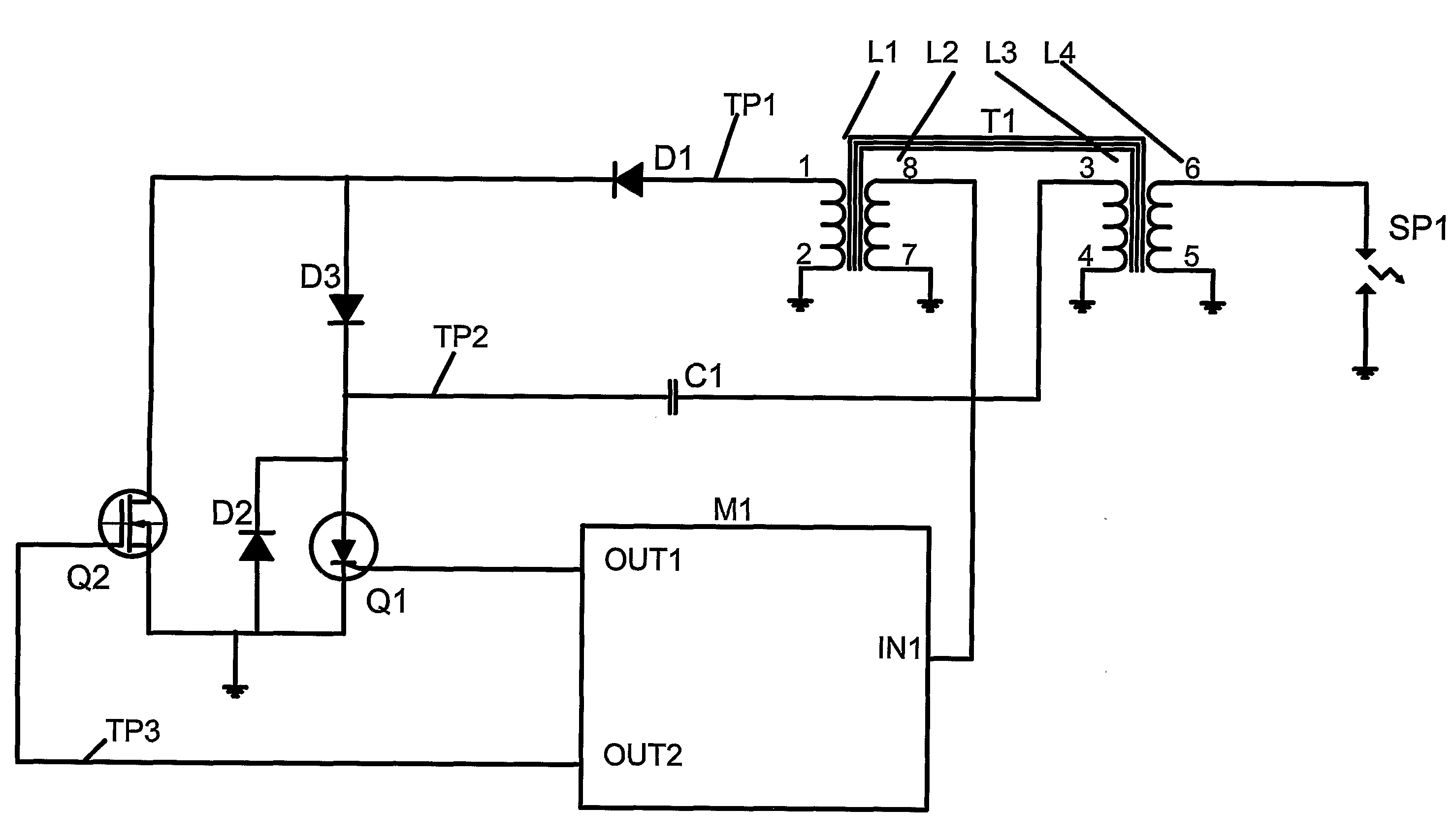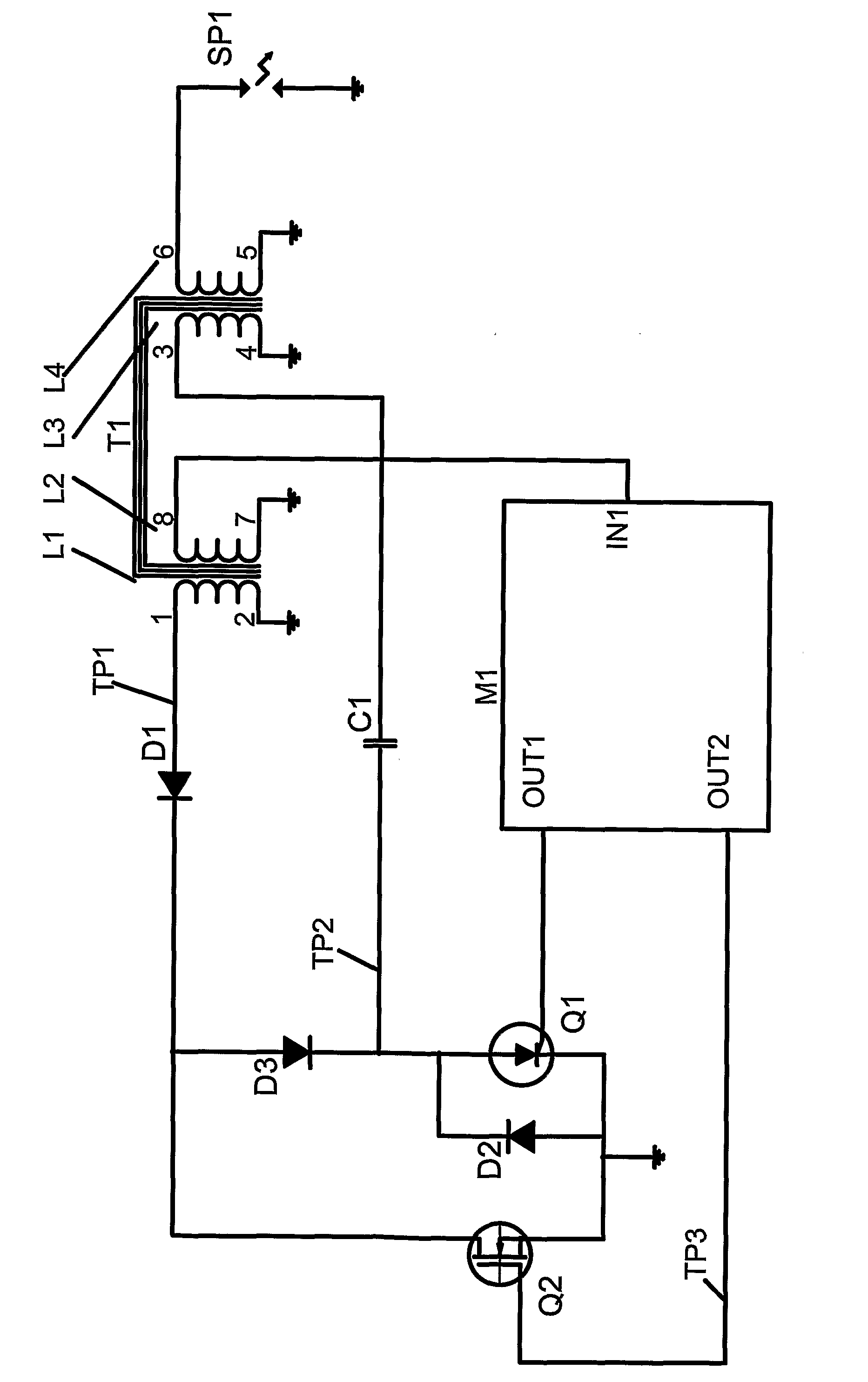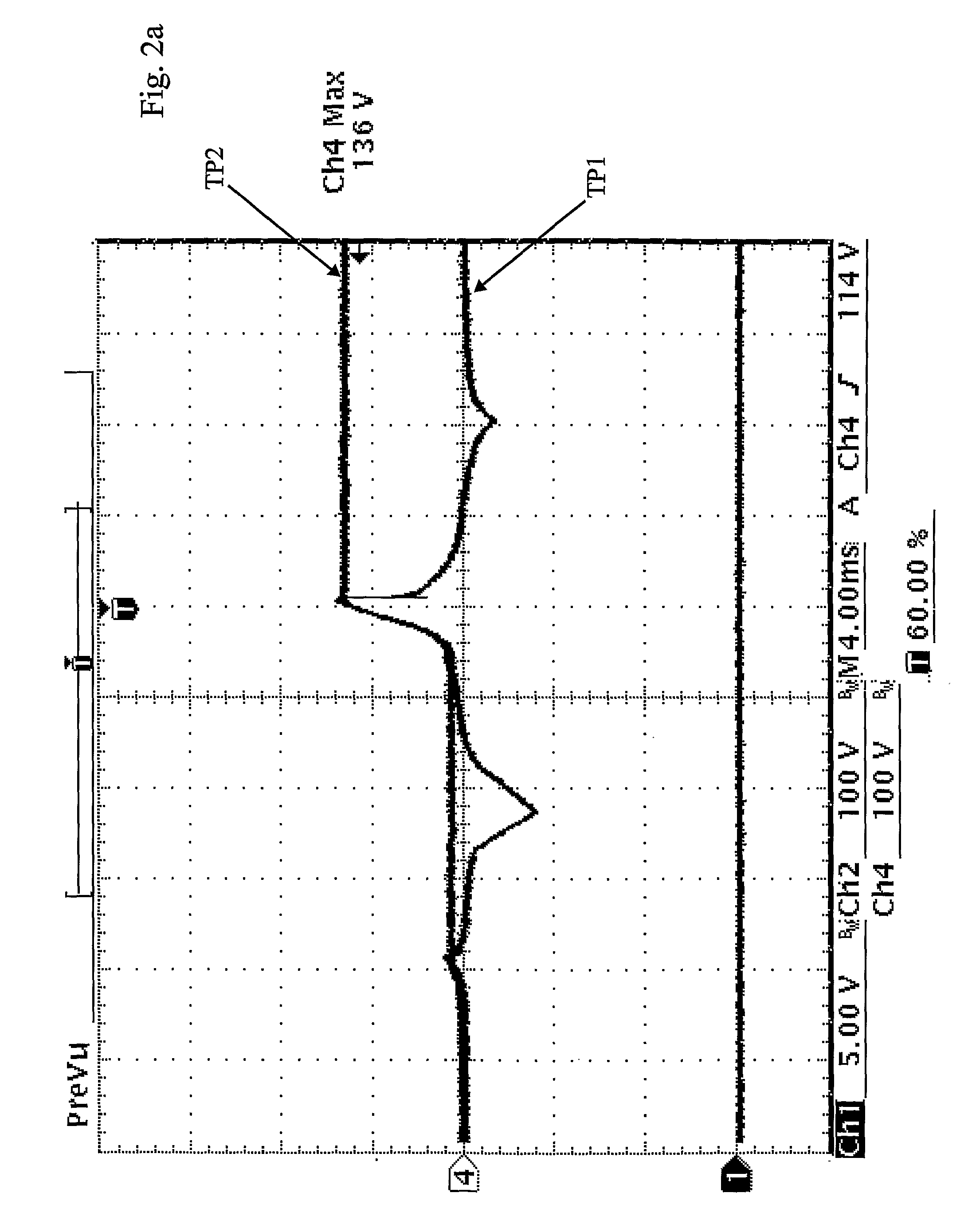Method and apparatus for raising the spark energy in capacitive ignition systems
a capacitive ignition and spark energy technology, applied in the direction of generator generated ignition energy, engine ignition, other installations, etc., can solve the problems of small or no addition of energy at low speed, conventional ignition systems have difficulty in providing sufficient spark energy, etc., to achieve good charge level of capacitors, improve efficiency, and reduce cost
- Summary
- Abstract
- Description
- Claims
- Application Information
AI Technical Summary
Benefits of technology
Problems solved by technology
Method used
Image
Examples
Embodiment Construction
[0020]In FIG. 1 is schematically shown a circuit diagram in a somewhat simplified form of a typical CDI-system for small engines which has been modified according to the invention. An iron core T1 provided with four conventionally arranged windings is magnetised by means of one or several magnets integrated in the flywheel which at the rotation of the flywheel will sweep past the end portions of the iron core. The variant with several magnets could be used for providing from a generally point of view a more powerful generator which in addition to the function as ignition voltage generator also could be used for other purposes for example fuel injection systems or handle heating on chain saws. The relative magnet movement induces a voltage in the windings L1-4 according to the following.
[0021]The winding L1 is the so called charge winding in which is induced a voltage which is used for the spark generation as such. The winding L1 is via one of its end points 1 connected via the recti...
PUM
 Login to View More
Login to View More Abstract
Description
Claims
Application Information
 Login to View More
Login to View More - R&D
- Intellectual Property
- Life Sciences
- Materials
- Tech Scout
- Unparalleled Data Quality
- Higher Quality Content
- 60% Fewer Hallucinations
Browse by: Latest US Patents, China's latest patents, Technical Efficacy Thesaurus, Application Domain, Technology Topic, Popular Technical Reports.
© 2025 PatSnap. All rights reserved.Legal|Privacy policy|Modern Slavery Act Transparency Statement|Sitemap|About US| Contact US: help@patsnap.com



